5 ESSENTIAL JAPANESE SEASONINGS | VERY BASIC OF JAPANESE COOKING! (EP190)
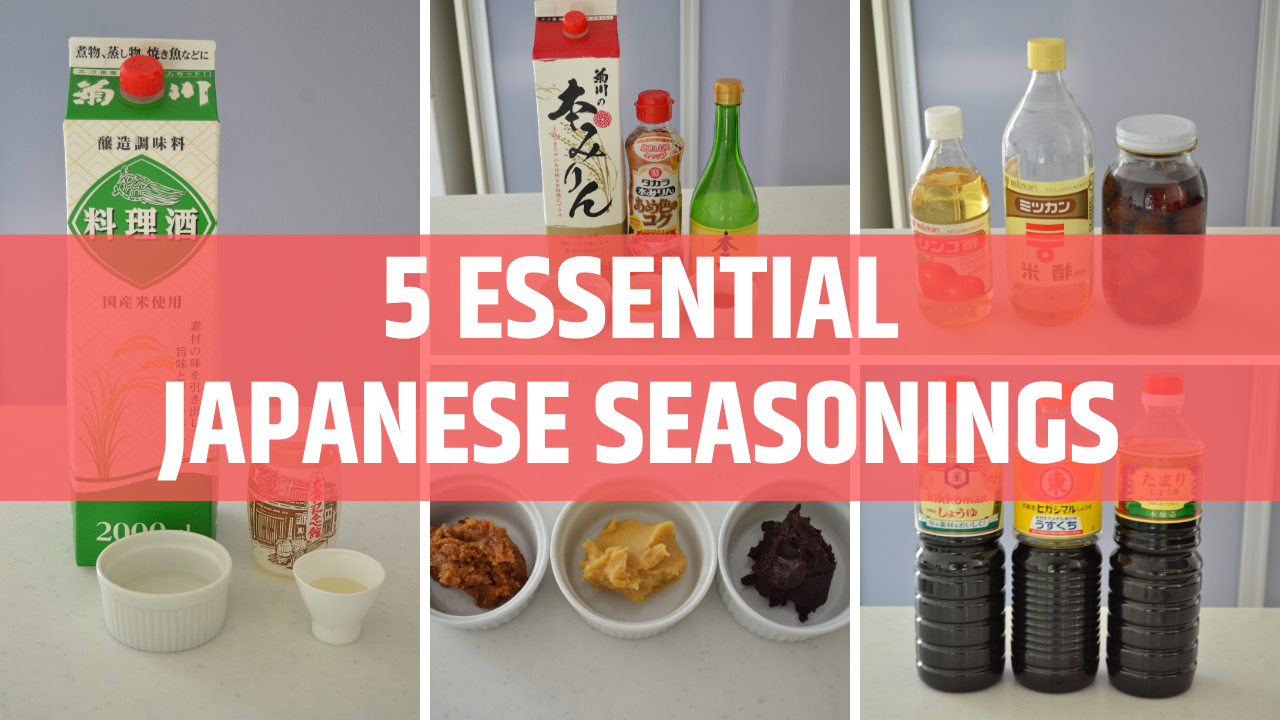
Today I want to share with you 5 essential Japanese seasonings, good to have if you’re going to start Japanese cooking.
Understanding the function of each seasoning, and knowing how it works to your dish, make your Japanese cooking even more delicious!
SOY SAUCE
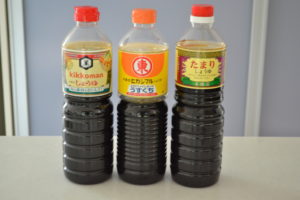
Soy sauce is THE MOST essential seasoning in Japanese cuisine.
It has savory aroma on its own and the mild saltiness, as you might already known.
It adds a rich aroma and Umami to any kind of dish.
When you drizzle soy sauce over your dish, literally Japanizes everything.
So, what is the ingredients of soy sauce?
Soy sauce is made from soybeans, wheat and salt, and Rice Koji.
Rice Koji plays the most critical role in the fermentation process.
There are several kinds of soy sauce in the market, “Shiro” which means white, the lightest version of soy sauce, and then light, regular and Tamari.
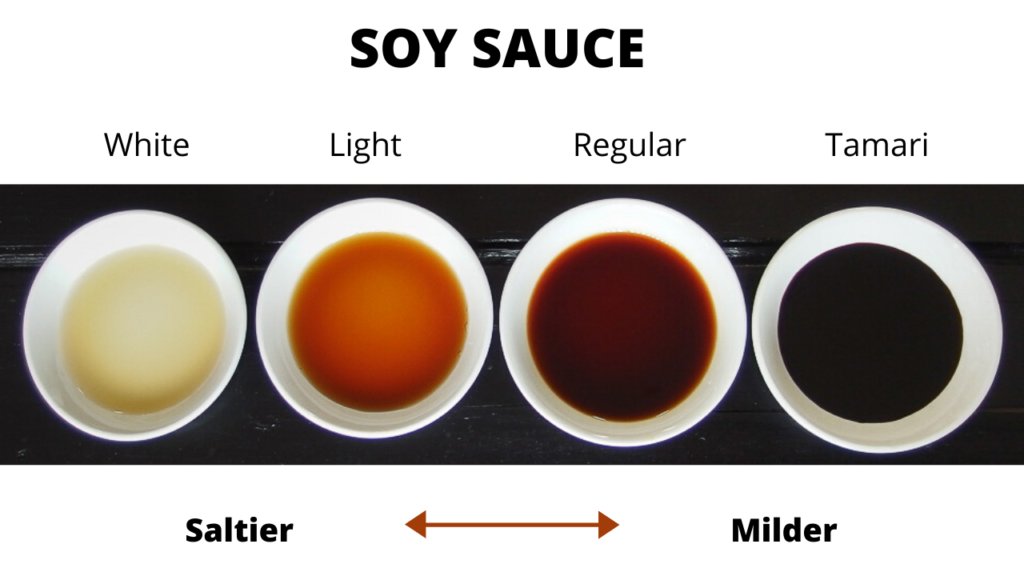
When it comes to the tastes, the lighter is saltier.
I recommend having regular soy sauce for the first bottle.
And then, if you are a serious Japanese cook, a bottle of light soy sauce enables you to cook various kinds of dishes.
In the Kansai area, where I live, includes Kyoto, we tend to use more light soy sauce.
Light soy sauce is light in color, high in salt content.
Because we would like to keep the color of the food as it is for the beauty purpose.
Light soy sauce (=Usukuchi soy sauce) adds the aroma and keep the food look more appealing at the same time.
If you like to eat Sashimi at home, Tamari is the best soy sauce you go for.
It’s made from more soybean than the other, has a less salty flavor but more sweetness from the soybean.
It has a little bit of thickness to it, so it stays on your Sashimi, brings more flavor into your mouth than regular soy sauce.
I always choose Kikkoman for the regular soy sauce, and Higashimaru for the light soy sauce.
Be sure to choose Usukuchi or light soy sauce when you are purchasing, do not choose light in sodium. It’s different.
Sake
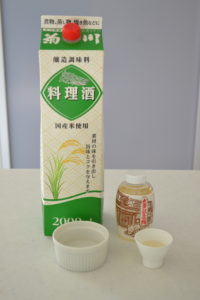
Sake is made from rice and rice Koji and water.
It contains 13 to 18 % of alcohol.
There are two kinds of product of Sake for cooking, one is blended only for cooking by adding amino acid and some kind of sweetner.
The other one is close to naturally brewed Sake for cooking. Not made for drinking.
I always choose this type.
Sake removes unwanting smells of seafood, especially fish.
And it softens ingredients so that the ingredients season well.
And adds Umami and keeps the deliciousness of foods.
I replace water to Sake to make delicious simmered fish.
If you can’t access to Sake, dry white wine is the best substitute.
I think the cheaper the better. Because it won’t leave the character of wine but aroma to the dish.
Mirin
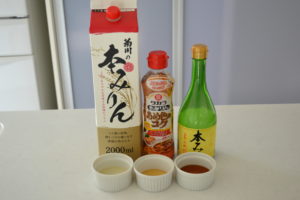
Mirin is another essential seasoning in Japanese cooking.
It’s made from sticky rice and Rice Koji.
Sake is made from short grain rice. These two are similar but different.
Mirin is sweeter than Sake and has complex Umami.
Basically, we use mirin to add mild sweetness without losing the taste of each ingredients.
Mirin gives your dish deep flavor and richer taste.
But, what’s the difference between sugar and mirin?
Can we substitute sugar for mirin?
Well, this is the question that frequently asked.
Here is the answer for you.
Sugar consists of a single sweet element, called sucrose.
On the other hand, Mirin consists of multi sweet elements, like maltose, glucose and natural amino acid.
It creates complex sweetness and Umami, so that our dish has wonderful flavor.
And Mirin prevents the ingredients losing its shape.
It is suitable for soft vegetables like Kabocha squash, or potato.
There are 2 kinds of product in the market, just like Sake.
Aji-mirin doesn’t contain alcohol, and is blended with amino acid or artificial sweetner.
It’s cheaper than Hon mirin, which means PURE or REAL mirin.
PURE or REAL mirin contains 13 to 14 % of alcohol, and it contains more Umami.
I always choose Hon-mirin, of course.
Mirin boosts its Umami by combining with soy sauce or dashi.
But if your grocery store doesn’t carry Hon-Mirin, just go for Aji-Mirin, better than nothing.
If your budget is limited, I recommend to buy Sake.
Sake and sugar create a similar taste to mirin.
Miso
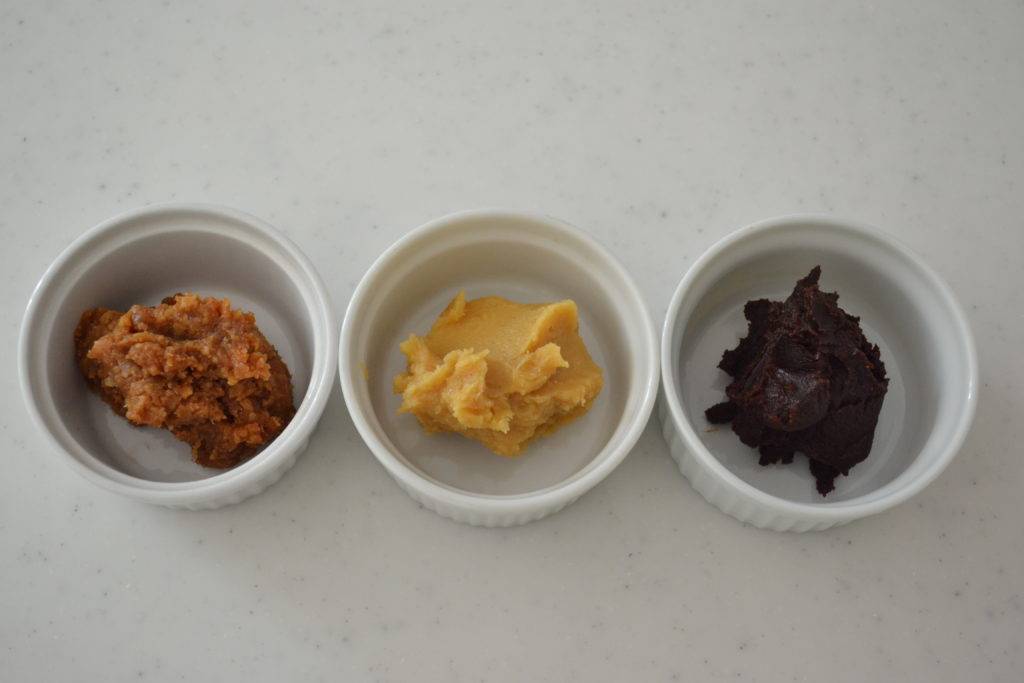
We usually have 3 kinds of miso, in our kitchen.
The first one is yellow miso.
It is used generally, use for miso soup, mostly, or dipping sauce or stir-fry.
It has mild saltiness and comfortable aroma. When we say miso, it automatically indicates yellow miso.
The second one is white miso.
The actual color is beige, and it has distinct sweetness in the flavor.
I use white miso for new year’s soup, and Japanese style dressing, combining with homemade sushi vinegar.
It’s very easy to make and tastes so good.
And, it is very good for marinating fish.
Have you ever seen the famous bento with marinated fish? That is marinated in white miso.
The third one is Red miso.
Red miso is used for Akadashi miso soup, served in sushi restaurant.
And I make a marinade for chicken, or dipping sauce.
It has the strongest flavor, and it tastes so unique.
These 3 kinds of misos are indespensable in my kitchen.
But which miso we have or like is rather regional things than the taste, I think.
Vinegar
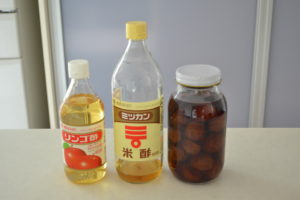
Next, vinegar.
I have several kinds of vinegar in my kitchen, but mostly I use rice vinegar.
Rice vinegar goes well with rice, it is suitable for our diet based on rice.
It has milder acidity compare to the other vinegar.
I make my Sushi vinegar with it and it’s always in my fridge. You can make sushi rice whenever you want, or Japanese style salad in a minute!
The other vinegar I have in my kitchen is, apple vinegar, and red Ume vinegar.
I make honey vinegar drink from apple vinegar.
Red Ume vinegar is a by-product of Umeboshi, and I use it for making Onigiri in this time of the year to keep it away from going bad.
I think the vinegar is the least ingredients to affect the taste of the dish.
Feel free to choose your favorite or use whatever you have on your hand.
And don’t forget sugar and salt.
A pinch of sugar makes a savory dish even more delicious, and a pinch of salt makes sweet treats delicious!
I hope you learn the basic Japanese ingredients in this video, and I hope you understand more of Japanese cuisine.
